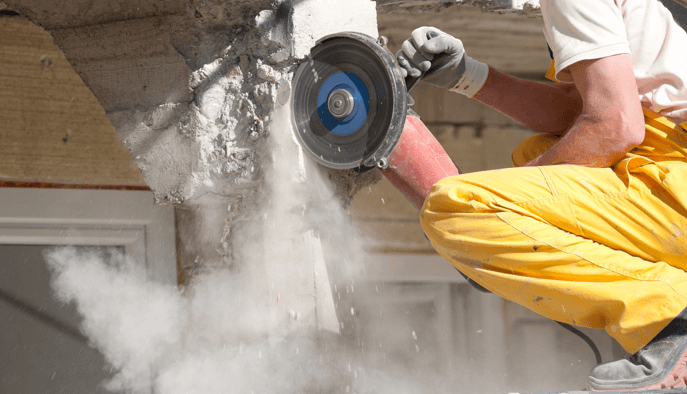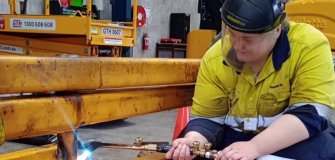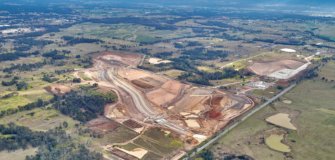How to work safely with silica
Martin Sinclair Jan 31

What does the national ban on engineered stone mean for the construction industry?
In December 2023, Australia became the first country in the world to nationally ban engineered stone following a surge in silicosis cases. Commonly used for kitchen benches and bathroom vanities, the ban on engineered stone aims to protect thousands of workers from respirable crystalline silica (or silica dust).
Safe Work Australia will now draft amendments to the model WHS Regulations1 prohibiting the use of engineered stone. The amendments will then be implemented separately by the states and territories, with the ban coming into effect on July 1, 2024 in most jurisdictions.
Until then, workers and businesses can continue to work with engineered stone in a controlled way, as detailed in the existing regulations. This includes wearing respiratory protective equipment (RPE) if you’re cutting, grinding, trimming, sanding, abrasive polishing or drilling engineered stone, plus using one of the following:
- a water suppression (wet cutting) system;
- an on-tool dust extraction system; or
- a local exhaust ventilation system.
Coates explains how to work safely with silica-based products.
For workers using products containing silica, the workplace exposure standard (WES) for respirable crystalline silica2 in all Australian workplaces remains no more than 0.05 mg/m3. This WES applies to an 8-hour working day, in a five-day working week, with compliance required under Commonwealth, state and territory WHS laws.
Although silica is an inherent part of working with building materials like concrete, stone and tile, there are ways to work safely with these materials. Coates’ comprehensive range of silica dust mitigation equipment is designed to support companies of all sizes.
According to Darell Kamphuis, Coates’ National General Hire Product Manager, the company was first to enter the rental market with a silica dust mitigation range to support customers in complying with the WES of 0.05 mg/m3, long before the standard was introduced in July 2020.
“Attending a tradeshow in the US in 2018 introduced us to some of the products and solutions that were available globally and gave us a head start on working with our suppliers to develop a range of products suited to managing this hazard here in Australia,” says Darell.
“Our knowledge and experience in this area also led to Coates providing an interface between the regulatory bodies in some states and territories and other industry bodies and customers to provide education and advise on suitable products and approaches to address this issue.”
“Similarly, with the ban on engineered stone, we’re here to help customers navigate their responsibilities and keep their workers safe,” he adds.
Coates’ range of dust mitigation equipment for hire includes:
Silica dust extraction
When dry-cutting materials like stone and concrete, Coates’ range of saws and grinders can come fitted with dust extractors or can be complemented by quality vacuum accessories to extract silica dust as it’s produced. Dust extraction kits are available for the safe drilling, chiselling, and demolition of most masonry surfaces.
Silica slurry extraction
Wet cutting, drilling, and grinding are the preferred methods for working with silica-based products to prevent the production of silica dust, however, these approaches still generate silica slurry that poses the risk of exposure as it dries. To avoid this hazard, specialised slurry vacuums can be used to extract slurry from cutting surfaces. Water supply units are also available to provide up to 30 minutes of constant-flowing water for wet cutting applications.
Air filtration
As a secondary measure for indoor use, Coates offers mobile air cleaner units to filter out any dust particles that manage to bypass wet or dry extraction.
For advice on managing silica dust within your workplace and for all your equipment hire needs, reach out to Coates today.
Sources:
1 Model WHS Regulations – Safe Work Australia
2 Workplace exposure standard (WES) for respirable crystalline silica










